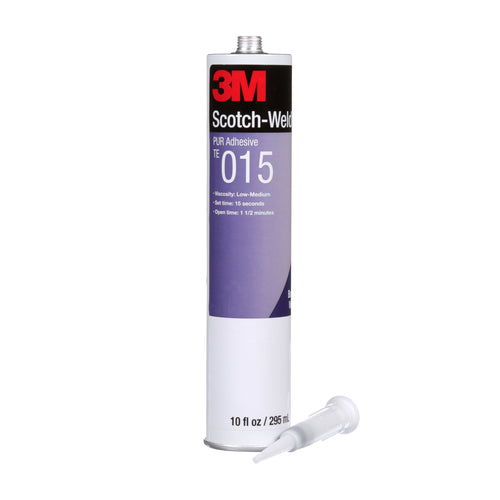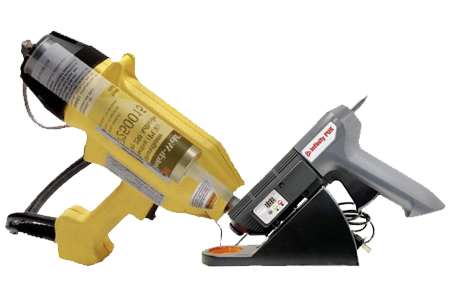PUR adhesives come in many different formulations, each of which spread, bond and perform in slightly different ways. These characteristics have implications for assembly process economics and the type of equipment used, so it’s important to consider them when selecting a specific adhesive.
One of the widest ranges of PUR adhesives is made by 3M. (They may also be the best-known adhesive manufacturer.) Here’s a look at how to go about choosing one of their PUR adhesives, and remember that these same points apply to PURs from other reputable manufacturers.
Why PUR Adhesive?
Before delving into the differences between various formulations, here’s a reminder of when PUR adhesives are a good choice and why.
-
Single part adhesive — no mixing
-
No solvent vapors or VOCs
-
Quickly forms strong bonds to porous materials (like wood) and high surface energy plastics, and gains more strength as it cures
Key Variations in Formulation and Performance
The main criteria to consider are:
-
Open time
-
Set time
-
Viscosity
Open time refers to the time available to make a bond after the adhesive has been applied. In a small volume, manual assembly process a long period might be desirable to allow time for positioning. Conversely, a short open time might be better in an automated process.
Set time refers to how long it takes to build strength at the bond. Again, the type of process in which the adhesive is being used will determine how much time is needed or available.
Viscosity indicates how the adhesive will spread after application. One with low viscosity will tend to flow out, covering a larger area with a thin layer. A high viscosity adhesive will go down as a bead. This may be advantageous if the product design calls for a minimum thickness or adhesive to only be in a specific location.
Selecting a 3M PUR Adhesive
3M produces one range of PUR adhesives for bonding wood and another for plastics. Open times for the wood PURs range from 1 – 4 minutes while for plastic PURs the times are 2 – 10 minutes. Set times are 15 – 120 seconds (wood) and 30 – 150 seconds (plastics). (3M defines set time as “time to handling strength”.)
Viscosity for both wood and plastic PUR adhesives ranges from around 3,000 – 16,000 cP. (For comparison, water has a viscosity of 1.0 cP while maple syrup is around 3,200 cP.)
These values vary with temperature. Set and open times and viscosity will all increase in cold conditions and fall in high ambient temperatures.
Other Selection Considerations
In some applications other factors affect the choice of adhesive. Again with reference to the wide range of 3M PUR adhesives, these may include some or even all of the following:
-
Elongation and hardness – high values indicate a stiffer, more rigid bond, low values the opposite. Measured on the Shore D hardness scale (also used for rubber,) 3Ms PURs for plastics range from 35 - 50 while those for wood are more rigid at 60 – 65. (For comparison, a golf ball has a Shore D hardness of 60.)
-
Color – 3Ms wood bond PUR adhesives come only in off-white. The plastic PURs are available in off-white, gray and black.
-
UV tracer dye – when an adhesive has this it’s possible to check for presence by making it fluoresce with a black light. This can be a valuable Quality Control aid where inspection is needed to verify adhesive presence. (Medical devices are one such application.) When manufacturing wood products an absence of tracer shows that a surface has no glue and so can be stained or painted.
-
Pack format and application method — 3M packages their PUR adhesives in several formats. Almost all come in the 0.1 gallon tube that works with their PUR Easy 250 Applicator. Many are also available in 5 gallon pails and 55 gallon drums. The larger formats are intended for extrusion, spray and roll coating processes.
Advice on Adhesive Selection
As PUR adhesives are relatively new, potential users might want to learn more about them before committing to their use. Our guide to PUR adhesives is a good place to start.
Having decided to work with PUR adhesives, the large number of formulations available can seem bewildering. If that’s the case we invite you to contact us for advice on PUR adhesives or help testing PUR adhesives for your application.












